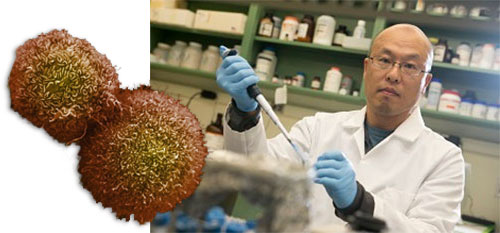 Every year neary 8 million people worldwide die from cancer. That equates to nerarly 22,000 people a day. It is estimated that by the year 2030 cancer cases will increase by nearly 80%. Now is the time that individuals need to come together to find more effective ways to treat the disease and eventually cure it.
Every year neary 8 million people worldwide die from cancer. That equates to nerarly 22,000 people a day. It is estimated that by the year 2030 cancer cases will increase by nearly 80%. Now is the time that individuals need to come together to find more effective ways to treat the disease and eventually cure it.
The cancer drugs used today work because they’re toxic, but that’s also why they affect healthy cells, producing side effects that can compromise their effectiveness. Nobuhide Ueki, a research scientist at Stony Brook University’s Department of Molecular Genetics & Microbiology, thinks he may have found a way to get the drugs to selectively target only the cancer cells.
Dr. Ueki was studying a protein in the lab to better understand the basic mechanism of cancer formation at the cell biology level. During the investigations, his team discovered that all the cancer cells it tested had very high activity of two particular enzymes, histone deacetylase (HDAC) and an endogenous protease called cathepsin L (CTSL). “We wondered if we could develop drugs to target those two enzymes to make a better anti-cancer drug,” he says.
The Stony Brook team took advantage of a substrate that was developed by a German group. They made a crucial modification to develop a prodrug — a biologically inactive compound that can be metabolized in the body to produce a drug — that is cleaved, or removed, by the two enzymes. By attaching this substrate to the cancer drugs, normal cells are protected, because only cancer cells have the ability to remove the masked prodrug and release the medication. The drug will act similar to a bomb sniffing dog. These dogs use their sense of smell to sniff out bombs, it is not until they find a bomb that they begin to react in a way to alert their handler. The drug will act in a very similar way, it will enter the body, “sniff” out the cancer cells and only “react” or bark, when they have found them.
Testing proved the hypothesis—in vitro proof-of-concept studies showed that the prodrug exerted promising anticancer capacity in a wide range of cancer cells; in vivo studies confirmed inhibition of tumor growth in prodrug-treated mice.
Dr. Ueki and his team hope their effort will attract the attention of pharmaceutical companies and other researchers, motivating them to make their own compounds using this technique. “Sometimes drug companies give up on a drug because it is so toxic,” he says. “If they can use this technique, they might be able to use their drug again. The more new drugs are developed, the more chances of successful treatment are increased. That’s our purpose.”
The SBU team is currently modifying the compound to achieve greater efficiency. It is addressing how the drug behaves in the body, its “pharmacokinetics”—the interactions of a drug and the body around its absorption, distribution, metabolism, and excretion. “It’s a prototypic compound at this point,” Dr. Ueki says. “It needs to be refined and improved.”
That optimization, just like the original discovery, is an interdisciplinary effort that cuts across Stony Brook’s Department of Molecular Genetics & Microbiology and Department of Chemistry. “We had a strong collaboration with the chemistry department,” Dr. Ueki says. “Myself and Professor Michael J. Hayman in Molecular Genetics & Microbiology worked with Professor and Chair Nicole S. Sampson and PhD candidate Siyeon Lee in Chemistry. Without their help, we couldn’t have done this research. They are very talented in making compounds and purifying them, and they have the capacity to produce these compounds in the large amounts we needed for the studies.”



